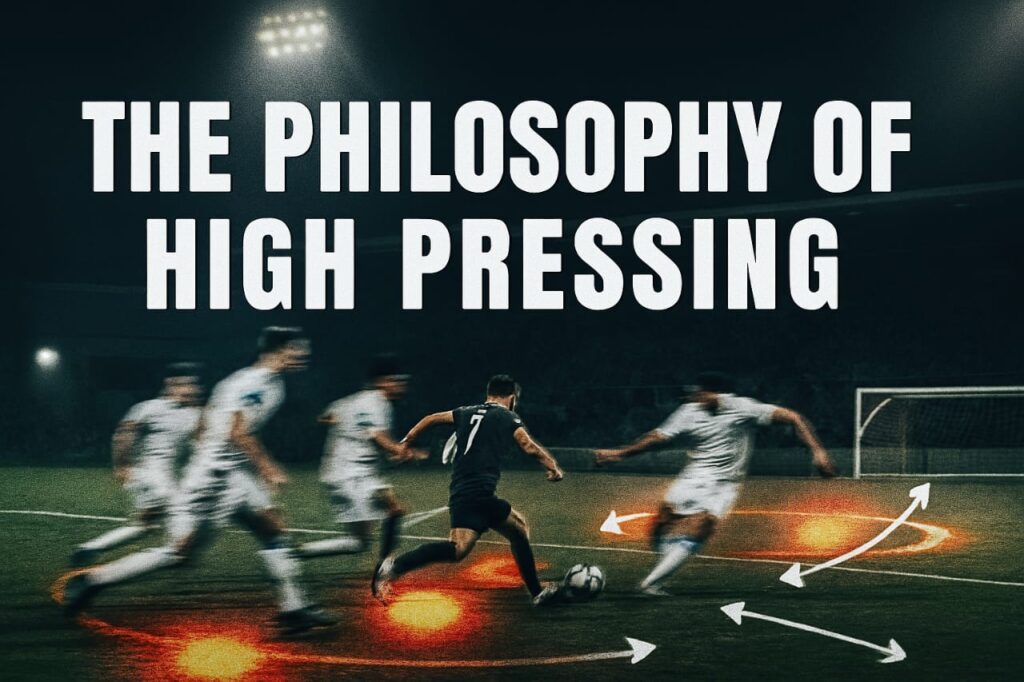Historical Evolution
The high press isn’t a modern invention—it has roots in the “Gegenpressing” philosophy pioneered by German and Austrian coaches. Early examples date back to the 1970s with Dutch total football and Ernst Happel’s pressing teams. However, the modern era saw managers like Jürgen Klopp and Marcelo Bielsa elevate pressing into a scientific tactical weapon.

Key Principles of Effective High Pressing
Trigger Moments
Pressing isn’t constant; elite teams act on triggers:
Back pass to a defender under pressure
Poor body orientation of an opponent
Specific zones near the penalty box
Example: Liverpool often presses heavily when an opponent receives the ball facing their own goal, exploiting limited passing options.
Pressing Zones
Teams divide the pitch into zones:
- High Press Zone: Opponent in defensive third
- Mid Press Zone: Middle third, pressing with caution
- Low Press Zone: Defensive third, compacting space and inviting errors
Text-based Diagram:
| HIGH PRESS | MID PRESS | LOW PRESS |
|---|---|---|
| 3-4-3 | 4-3-3 | 4-2-3-1 |
Compactness & Lines of Engagement
Maintaining tight distances between lines of defense, midfield, and attack is crucial. This prevents the opponent from finding pockets of space to bypass the press.
Formations That Maximize Pressing
4-3-3 Pressing Shape
Front three initiate the press
Midfield supports by covering passing lanes
Fullbacks maintain width to trap opponents
Example: Klopp’s Liverpool 4-3-3 is textbook high pressing with constant triggers and aggressive forward movement.
3-4-3 High Press Structure
Three central defenders sweep behind
Wingbacks provide width in the press
Three midfielders maintain central compactness
Front three coordinate pressing triggers
Example: RB Leipzig under Nagelsmann utilizes 3-4-3 to trap opponents in wide areas while maintaining numerical superiority centrally.